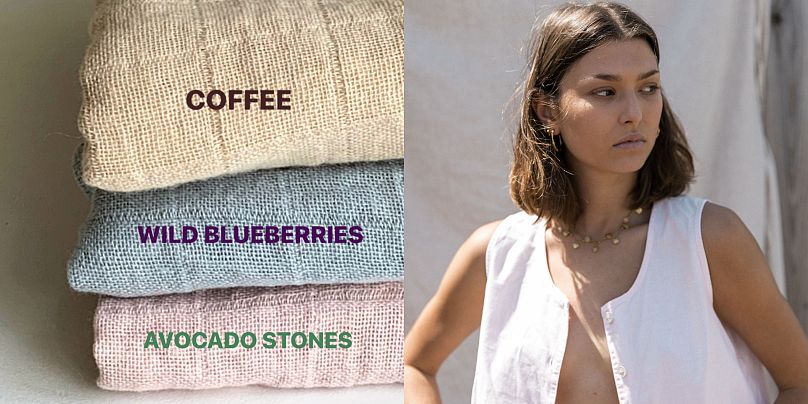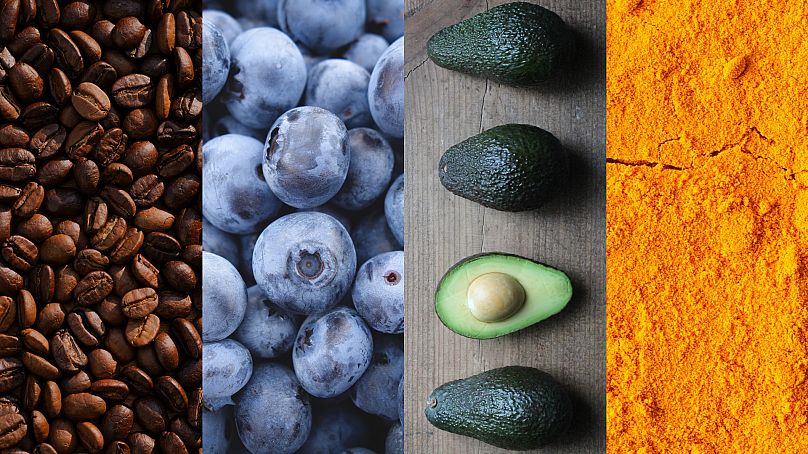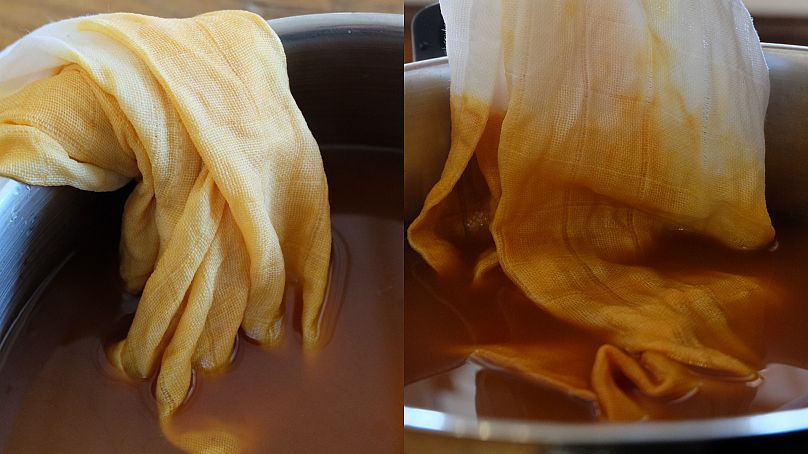Wellness influencer Danielle Copperman shows us how to use natural dyes to give old clothes a new life.
Danielle is a British model, entrepreneur and wellness influencer. Here she gives us some pearls of wisdom on how to give old clothes a new life.
I’ve wanted to use natural dyes to spruce up my wardrobe for a long time. But somehow, like so many things I’ve never tried before, I lacked the confidence – it seemed too complicated and I was worried I’d ruin my clothes.
Thanks to the lockdown, I’ve had more time on my hands and have enjoyed researching ways I can make my daily life more eco-friendly. As a model and influencer, fashion plays a big part in my life and I’m always looking to re-use and upcycle whatever I own.
Working with natural dyes is an incredibly satisfying experience as you get the chance to experiment with your clothes, while using up fruit and vegetables in your larder. You’re avoiding waste and giving old, unloved garments a second chance.
Once I got down to it, I realised the process was much simpler than I thought it would be. All you need is:
- A mordant (a fixing substance used to set the dye – natural options include soya milk)
- Natural produce rich in tannins (plants, fruits, vegetables, tea, coffee…etc)
- Water
- Some undyed fabrics (pure cotton or linen work nicely)
- A large bowl and a sieve/strainer
- Some medium-large saucepans
Choose your fabrics
First things first, find something suitable to dye. I would suggest starting with scraps of fabric or buying a roll – even something small like napkins or tea towels.
This will help you try a few colours before dyeing something you might actually want to wear or use around the house. The main requirement is that the fabric you use is natural and pure. It’s important to find a pure fibre such as cotton or linen, rather than a mixed material which is artificial or synthetic, as these won’t take to the dye as well.
Make sure the fabric is its natural colour too, and hasn’t been treated, bleached or dyed already - my first go was with a cotton muslin.
Choose your colours
Next, choose your plant-based dye sources, which could be fruit, vegetables, roots, spices or flowers rich in tannins.
My favourites are coffee or tea (for a brown dye), berries, beetroot, cherries or red wine (for a purple, blue, crimson dye), avocado stones (for a pale pink dye), turmeric (for a yellow/ orange dye) and matcha or spirulina (for a green dye).
Prepare the fabric
The first step is to treat your fabrics with a mordant. A mordant basically ensures the dye is fixed to the fabric. You can use many substances for this, but soya milk seemed preferable when I was researching and also easy to find and cheap to buy. Don’t use an artificial mordant as this could affect the fabric and also can be irritating or mildly toxic, and it can have detrimental effects on the earth if you dispose of it in future. It’s always best to use 100 per cent natural ingredients.
Simply fill a large bowl with some soya milk and then dilute with water. There doesn’t seem to be a specific ratio for this, so I have experimented several times. My first trial had a higher soya milk concentration, and my second had a more diluted solution. Both worked equally well.
I poured in about a third to a half of a carton of soya milk, topped up with water, before submerging my fabric. Use as much fabric as will fit inside the bowl and make sure the liquid just covers the fabric fully.
Mix it around to combine the liquid and then leave to soak overnight or longer. I would leave mine for about 12-20 hours in total.
Once soaked in the mordant, rinse the fabric fully the next day and leave to dry while you prepare the dye.
Make the dye
Now for the fun bit. To make the dye, simply place your chosen ingredients into separate medium/large stainless steel saucepans. I do two colours at a time just so it’s manageable, and would suggest doing the same. Once the ingredients are in the pot - add water, just enough to fit your fabric in and to ensure the liquid covers it.
In terms of the strength of the colour, the more ingredients you use the richer the colour will be.
For a paler result, use less ingredients and dilute more with water. I would use around 150g ground coffee, 20-30g ground or fresh turmeric, 200g frozen or fresh berries, two to four large avocado stones or roughly a handful of most other things you want to experiment with.
Once your ingredients and water are together in the pot, bring to the boil for 10-20 minutes and then reduce the heat and simmer over a low to medium heat for one hour.
Dyeing the fabric
Simply strain the ingredients and transfer the dye into a clean bowl or pot. Then, it’s time to add your fabrics. Carefully add your fabric to each dye, being cautious not to stain the clothes you’re wearing.
Submerge the fabrics completely so they are fully covered with the dye and then leave to soak overnight or longer. I left my first batch for about 24 hours and my second trials for two days and both worked well. Leaving the dye for longer intensifies the richness of the stain.
So if you’re after a deep, full-bodied purple or a rich, vibrant orange, leave the dye to work its magic for another day.
Final steps
When the fabric has finished soaking, rinse it thoroughly and ring out any excess colour, before hanging up to dry. Ideally hang outside in the shade or else inside away from direct sunlight.
Once they are dry – voilà! Your clothes look as good as new and you’ve made good use of any fruit and vegetables lying around in the house. Natural dyes are an easy, accessible way to spice up plain or greying garments you might have otherwise thrown away. It’s a fun, fulfilling process I would recommend to everyone.














